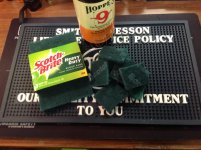- Joined
- May 12, 2011
- Messages
- 1,524
- Reaction score
- 827
A ring or stain is completely normal. An accumulation of lead which might ultimately interfere with rotation is not. Gas pressure will usually scrub the cylinder enough to prevent a major buildup.
I use hard cast bullets from Oregon Trails (Laser Cast) in .357, .44, .45 Colt and 45-70, and do not get more than minor leading. Metallurgy and lubrication are key elements, more important than the powder or velocity (within limits).
Tin makes lead hard, but also reduces the melting point. Pure lead melts at about 600 degrees F, but as low as 370 F with the addition of tin. If you get lead accumulation on the cylinder, it is usually accompanied by leading in the barrel. Soft lead can be stripped if the velocity is too high, but more serious leading occurs if melting occurs due to friction and wrong metallurgy or inadequate lubrication.
I presume you have measured the barrel gap, and it's less than 0.010".
I use hard cast bullets from Oregon Trails (Laser Cast) in .357, .44, .45 Colt and 45-70, and do not get more than minor leading. Metallurgy and lubrication are key elements, more important than the powder or velocity (within limits).
Tin makes lead hard, but also reduces the melting point. Pure lead melts at about 600 degrees F, but as low as 370 F with the addition of tin. If you get lead accumulation on the cylinder, it is usually accompanied by leading in the barrel. Soft lead can be stripped if the velocity is too high, but more serious leading occurs if melting occurs due to friction and wrong metallurgy or inadequate lubrication.
I presume you have measured the barrel gap, and it's less than 0.010".

